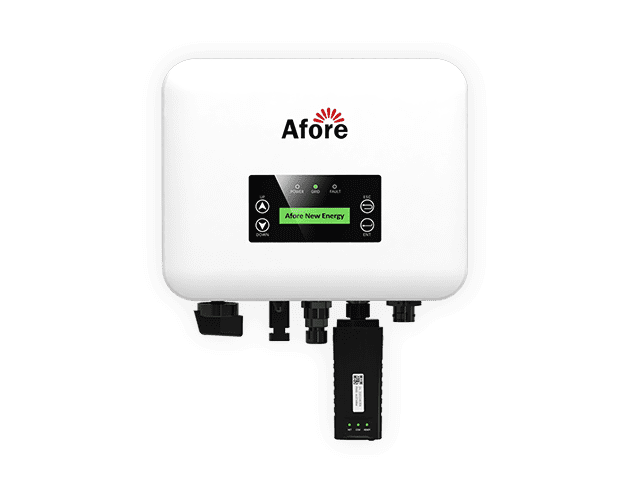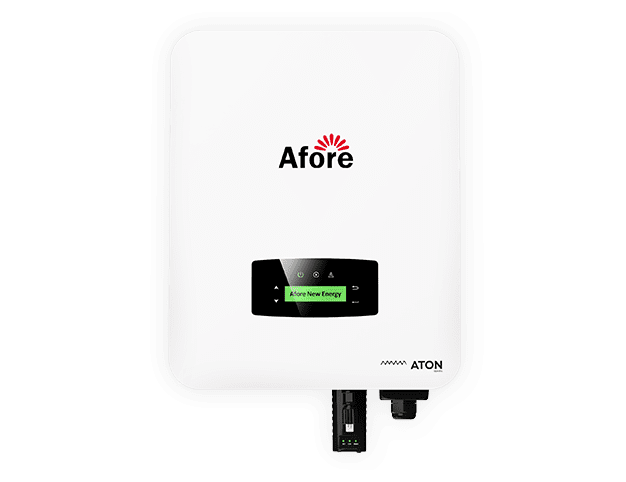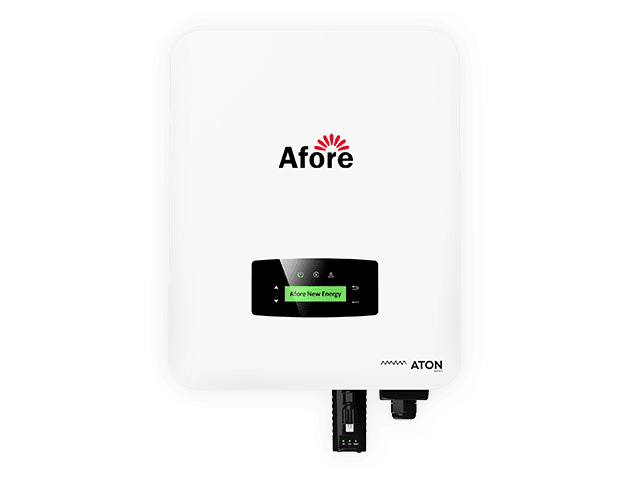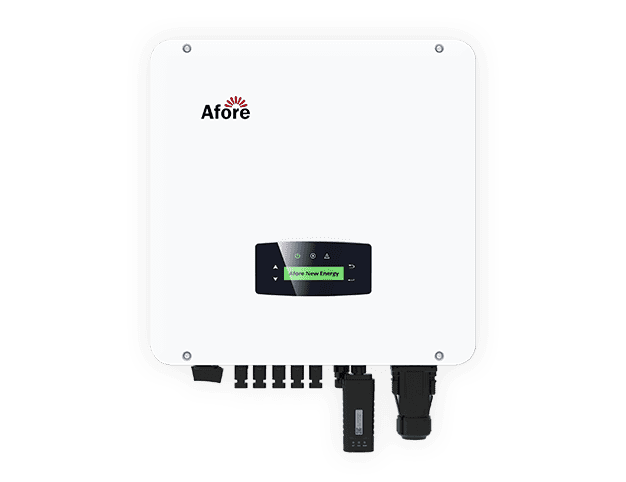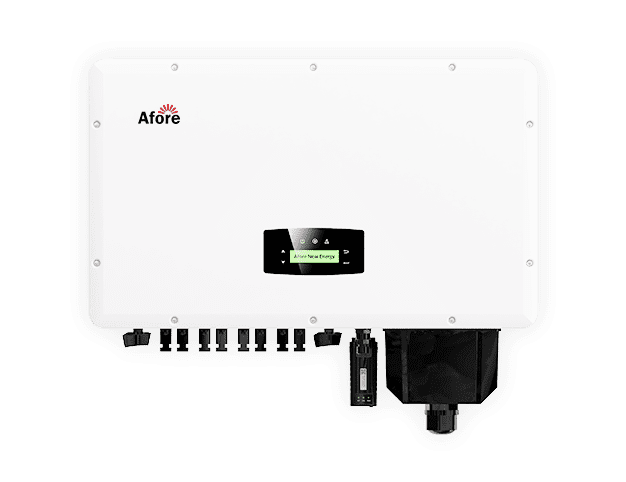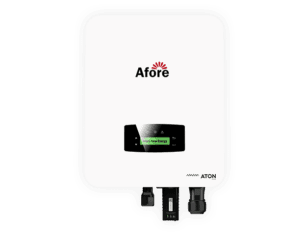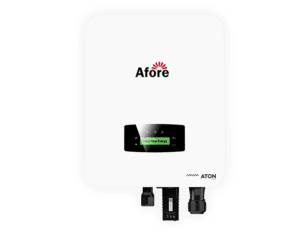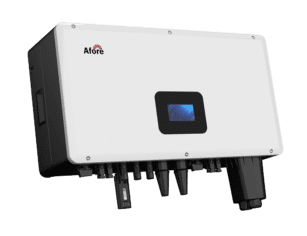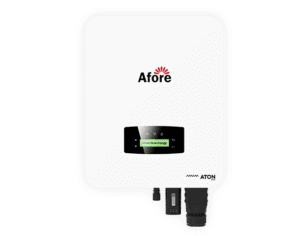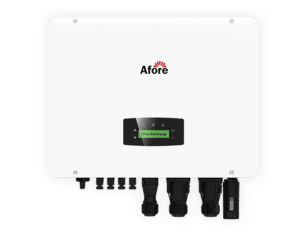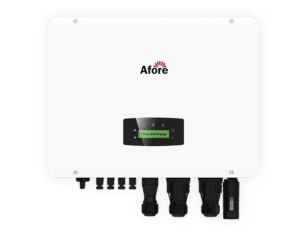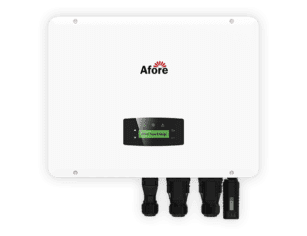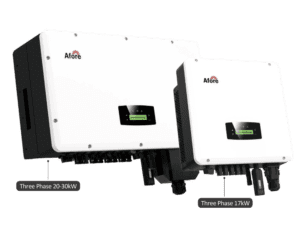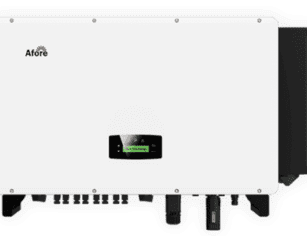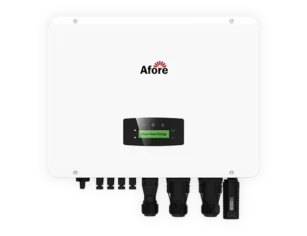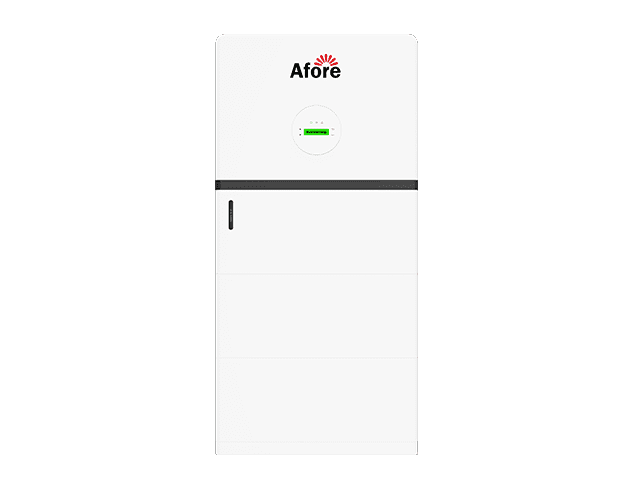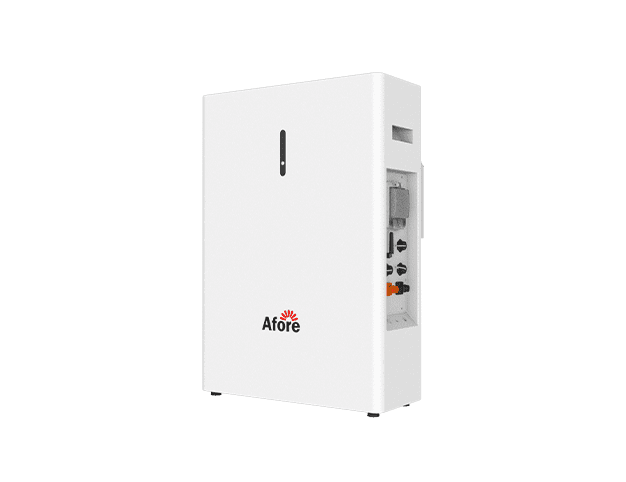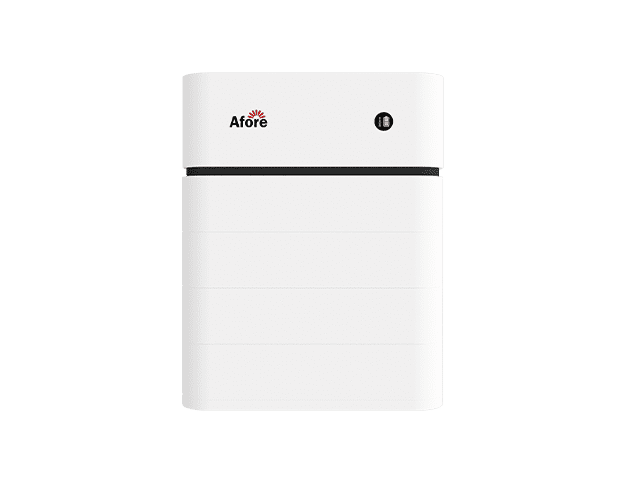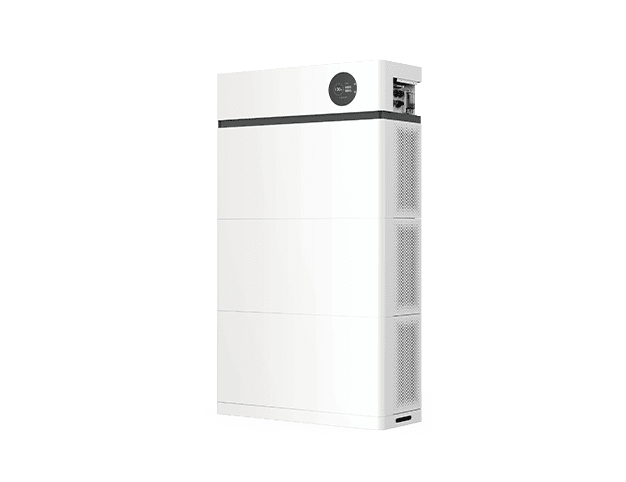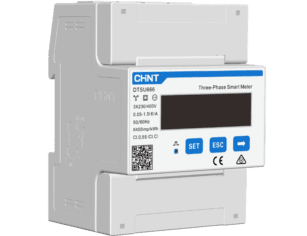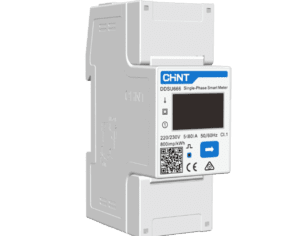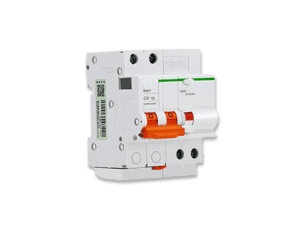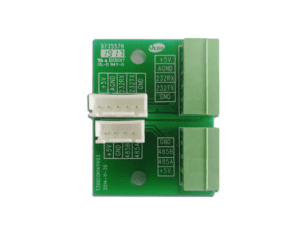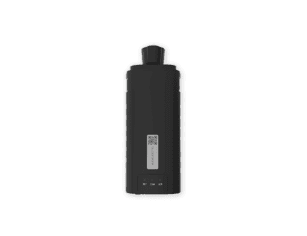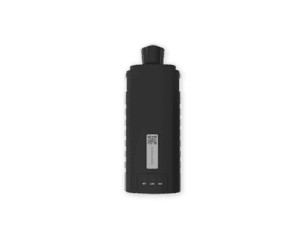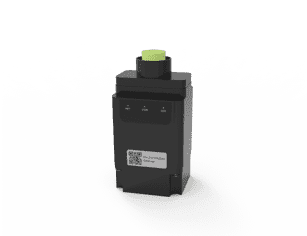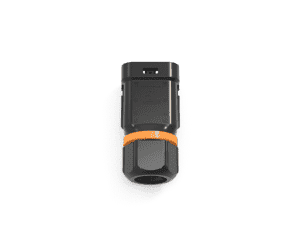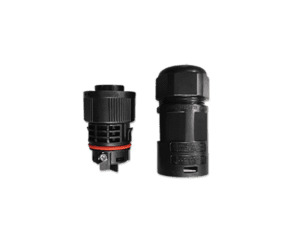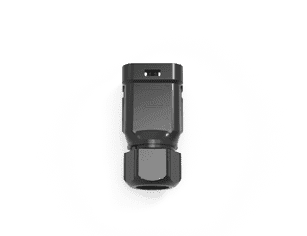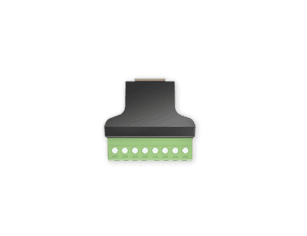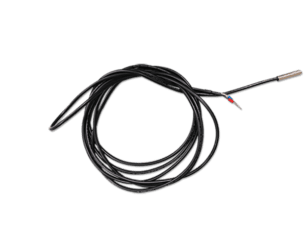Ефективність сонячних інверторів: Що потрібно знати
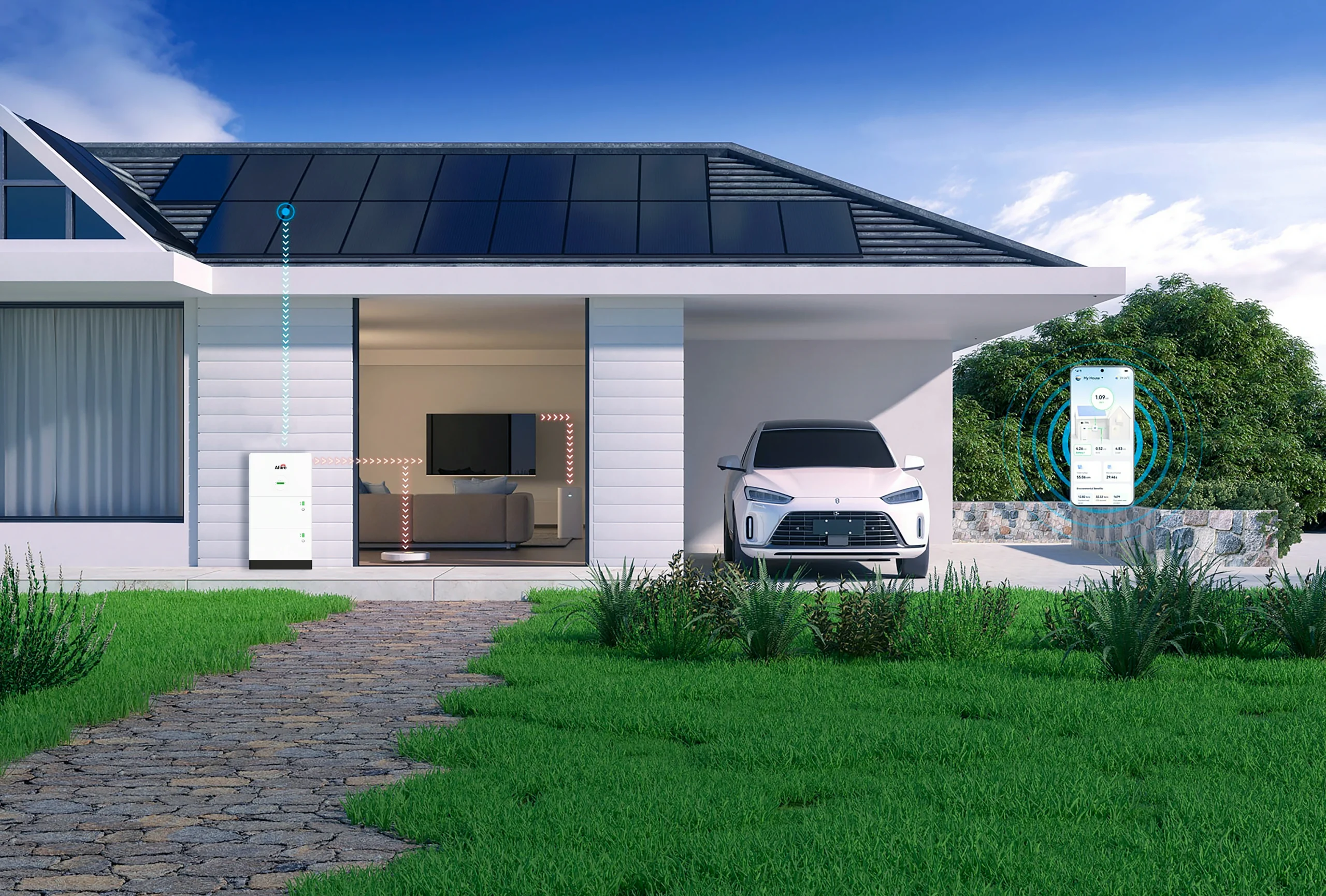
Зміст
У сучасному світі, що дбає про енергозбереження, домовласники та компанії, які інвестують у сонячну енергетику, звертають особливу увагу на один важливий, але часто нехтуваний показник - ефективність інвертора. Хоча сонячні панелі, як правило, привертають до себе увагу, насправді саме сонячний інвертор - пристрій, що відповідає за перетворення електроенергії постійного струму з ваших панелей у придатну для використання електроенергію змінного струму - непомітно визначає, яка частина зібраного сонячного світла насправді живить ваш будинок. Навіть невеликі відмінності в роботі інвертора можуть з часом призвести до значних втрат або економії енергії. У цьому вичерпному посібнику ви дізнаєтеся про реальні характеристики інверторів, про те, чому ефективність має значення, як її розраховують і як ви можете приймати розумні рішення під час проектування або модернізації вашої сонячної електростанції.
Вступ до ефективності інвертора
Що таке інвертор і чому ефективність має значення?
Якщо ви коли-небудь цікавилися сонячними енергетичними системами, то, безсумнівно, стикалися з терміном "ефективність інвертора". Але що він насправді означає, і чому вас це повинно хвилювати? Простіше кажучи, інвертор - це пристрій, який перетворює постійний струм (DC) від ваших сонячних панелей або батарей на змінний струм (AC), який живить ваш будинок або бізнес. Ефективність цього процесу визначає, яка частина згенерованої сонячної енергії перетворюється на корисну електроенергію. Чим вищий коефіцієнт корисної дії інвертора, тим більше електроенергії ви отримаєте від вашої сонячної установки.
Це не дрібниця. Насправді, ефективність інвертора може безпосередньо впливати на ваші рахунки за електроенергію, рентабельність інвестицій і навіть на вплив вашої системи на навколишнє середовище. Втрата всього лише 3% ефективності може коштувати сотні доларів протягом усього терміну служби вашої сонячної системи.
Як ефективність інвертора впливає на сонячні енергосистеми
Сонячні інвертори є основою сонячних енергетичних систем. Ефективність вашої сонячної системи залежить від того, наскільки ефективно інвертор перетворює електроенергію постійного струму в змінний. Низька ефективність інвертора не тільки марно витрачає енергію, але й знижує загальну продуктивність, роблячи вашу систему менш екологічною та економічно ефективною.
Роль інверторів у перетворенні енергії
Перетворення з постійного струму в змінний не відбувається без втрат. Кожен інвертор має невід'ємні втрати під час перетворення. Саме ці втрати стають вирішальними для ефективності інвертора. Чим кращий інвертор, тим ближче ви до оптимальної продуктивності. Високоякісні інвертори використовують складні алгоритми та апаратне забезпечення для мінімізації цих втрат, збільшуючи вихід енергії від ваших сонячних панелей.
Розуміння ефективності інвертора
Визначення та значення коефіцієнта корисної дії інвертора
Ефективність інвертора означає, наскільки ефективно інвертор перетворює електроенергію постійного струму (DC), вироблену сонячними панелями, в електроенергію змінного струму (AC), яка використовується побутовими приладами, машинами та електромережею. Оскільки цей процес перетворення завжди пов'язаний з певними втратами енергії - переважно у вигляді тепла - показник ефективності показує, яка частина вихідної сонячної енергії зберігається і передається у вигляді корисної енергії.
Скажімо простіше: якщо ваш сонячний інвертор має ККД 97%, це означає, що 97% енергії, яка надходить від сонячних панелей, перетворюється на корисну електроенергію змінного струму, тоді як решта 3% втрачається під час перетворення. Чим вищий цей коефіцієнт корисної дії, тим краще працює ваша сонячна система в цілому.
З практичної точки зору, ефективність інвертора безпосередньо впливає на рентабельність вашої системи. Низька ефективність означає, що більше сонячної енергії витрачається даремно, що може призвести до значних збитків за роки експлуатації. Ось чому цей показник має вирішальне значення не тільки для оцінки продуктивності, але й для прийняття обґрунтованих рішень при покупці або модернізації сонячного інвертора.
Сучасні інвертори використовують складну електроніку, системи охолодження та алгоритми відстеження потужності, щоб зменшити ці втрати при перетворенні. Технологічні вдосконалення матеріалів, таких як карбід кремнію (SiC) і нітрид галію (GaN), також відіграли ключову роль у підвищенні продуктивності та наближенні ефективності до теоретичного максимуму.
Що таке формула ефективності інвертора?
Розуміння того, як розраховується ефективність інвертора, є важливим для порівняння різних моделей інверторів та моніторингу стану власної системи. Формула проста, але надзвичайно корисна:
Коефіцієнт корисної дії інвертора (%) = (вихідна потужність змінного струму ÷ вхідна потужність постійного струму) × 100
Припустимо, ваш сонячний інвертор отримує 1000 Вт (Вт) постійного струму від ваших панелей і перетворює його в 970 Вт змінного струму. Розрахунок буде таким:
(970 ÷ 1000) × 100 = ефективність 97%
Ця формула дає вам уявлення про те, наскільки добре працює ваш інвертор в даний момент. У більшості випадків виробники надають кілька типів показників ефективності на основі цієї формули:
- Пікова ефективність: Максимально можливий ККД, якого інвертор може досягти за ідеальних умов.
- Європейська зважена ефективність: Середньозважений показник, який враховує змінні умови навантаження, більш характерні для реальних умов.
- CEC (Каліфорнійська енергетична комісія) Ефективність: Ще один зважений стандарт, який часто використовується для рейтингування продуктів у США.
Кожен з цих рейтингів розраховується за базовою формулою, наведеною вище, але за різних умов тестування. Купуючи сонячний інвертор, завжди уточнюйте, який саме показник ефективності вказано.
Що таке хороший ККД інвертора?
Отже, на що слід звертати увагу в сонячному інверторі, коли мова йде про ефективність? Як правило, сучасні мережеві інвертори повинні мати ККД не менше 95%. Преміум-моделі часто перевищують 97%, а деякі пристрої найвищого рівня можуть похвалитися піковою ефективністю 98,5% або вище.
Ось розбивка того, що вважається "хорошим" на сучасному ринку:
| Рейтинг ефективності | Рівень продуктивності |
| < 93% | Низький (застарілий або неефективний) |
| 93%-95% | Середній показник |
| 95%-97% | Добре. |
| > 97% | Відмінно (моделі високого класу) |
Важливо пам'ятати, що реальна продуктивність часто коливається залежно від температури, навантаження та умов навколишнього середовища. Це означає, що інвертор з піковою ефективністю 98% може зазвичай працювати на рівні 95-96% залежно від часу доби та попиту на електроенергію.
Також варто враховувати ефективність при частковому навантаженні, яка відображає роботу інвертора, коли ваша система працює не на повну потужність. Багато систем працюють нижче пікових режимів протягом значної частини дня, особливо вранці та пізно ввечері. Високопродуктивний інвертор повинен підтримувати стабільну ефективність навіть за таких часткових навантажень.
Коротше кажучи, хороша ефективність інвертора - це ефективність, яка залишається високою в різних реальних умовах, а не тільки в ідеальних лабораторних тестах. Приймаючи рішення про покупку, звертайте увагу не лише на пікові показники, але й на перевірені експлуатаційні характеристики та незалежні сертифікати, такі як CEC або TUV Rheinland. Варто зазначити, що всесвітньо відома компанія виробник сонячних інверторівБільшість сонячних інверторів Afore мають ККД понад 97%.
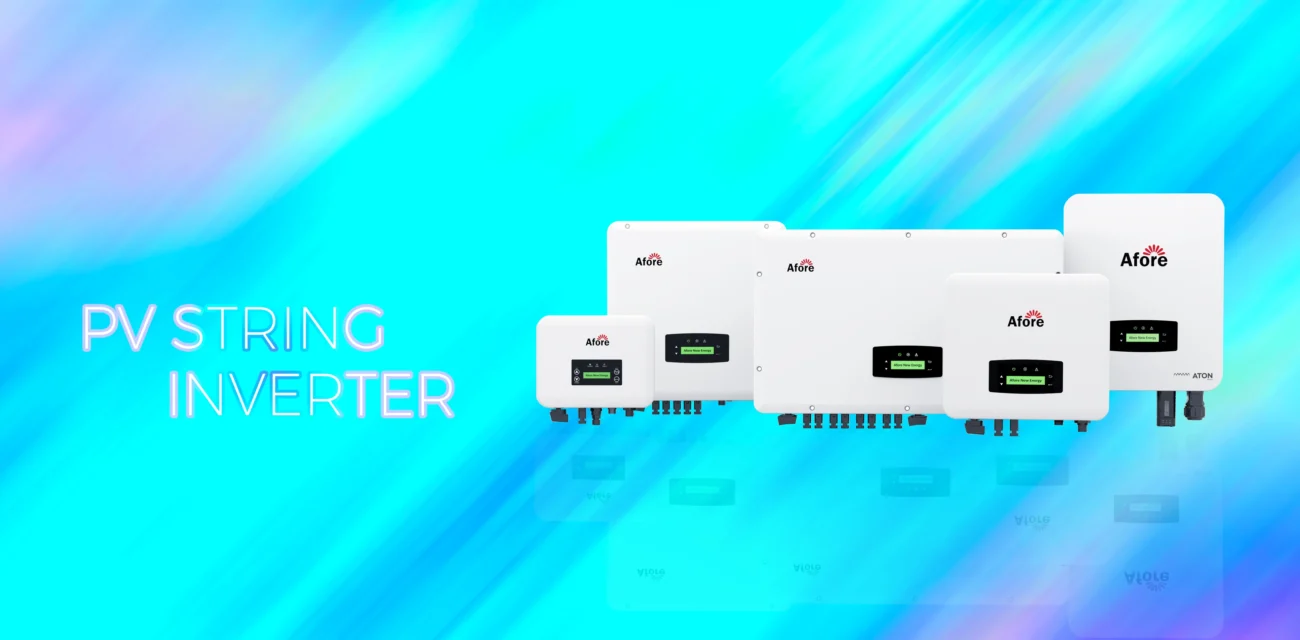
Фактори, що впливають на ефективність сонячного інвертора
Внутрішній дизайн і технологія
Серцем будь-якого сонячного інвертора є його внутрішня конструкція і технологія, яка суттєво впливає на ефективність інвертора. Протягом багатьох років досягнення в області напівпровідникових матеріалів і схемотехніки зробили революцію в тому, наскільки ефективно ці пристрої перетворюють енергію.
У сучасних інверторах все частіше використовуються такі передові матеріали, як карбід кремнію (SiC) і нітрид галію (GaN). Ці матеріали забезпечують швидшу швидкість перемикання та менший опір у силових електронних компонентах, зменшуючи втрати енергії у вигляді тепла під час процесу перетворення постійного струму в змінний. Це безпосередньо призводить до вищих показників ефективності - у топових моделях пікова ефективність часто перевищує 98%.
Крім матеріалів, на загальну продуктивність впливають такі конструктивні фактори, як механізми охолодження (активні вентилятори, пасивні радіатори), розташування силової електроніки та інтегровані алгоритми відстеження точки максимальної потужності (MPPT). Ефективне охолодження запобігає тепловому навантаженню на компоненти, яке з часом може погіршити продуктивність, в той час як MPPT забезпечує роботу інвертора при оптимальних рівнях напруги і струму від сонячних панелей, максимізуючи видобуту енергію.
Тому, оцінюючи ефективність сонячного інвертора, важливо враховувати складність конструкції інвертора, оскільки саме ці внутрішні технології визначають, скільки енергії в кінцевому підсумку потрапить до вашого будинку або в мережу.
Умови навантаження та схеми використання
Ефективність інвертора не залишається постійною; вона значно змінюється в залежності від навантаження і того, як сонячна система використовується протягом дня. Більшість інверторів найкраще працюють при помірних навантаженнях, як правило, в діапазоні від 30% до 80% від їх номінальної потужності. У цьому діапазоні внутрішня силова електроніка працює близько до точки оптимальної продуктивності, мінімізуючи втрати.
Однак при роботі з дуже низьким навантаженням - скажімо, рано вранці або пізно ввечері, коли вихід сонячної енергії обмежений - ефективність має тенденцію до падіння. Це пов'язано з тим, що деякі компоненти інвертора споживають фіксовану кількість енергії незалежно від навантаження, тому відсоток втраченої потужності стає пропорційно вищим при менших навантаженнях.
І навпаки, безперервна робота інвертора на повній або близькій до повної потужності також може призвести до зниження ефективності, часто через підвищене тепловиділення та навантаження на компоненти. Ось чому правильний вибір розміру інвертора відносно масиву сонячних панелей має вирішальне значення для підтримання високої ефективності при типових схемах використання.
Розуміючи ці зміни ефективності залежно від навантаження, проектувальники систем та власники будинків можуть краще налаштувати свої системи, щоб максимізувати вихід енергії та загальну довговічність системи.
Температура навколишнього середовища та умови встановлення
Фактори навколишнього середовища, особливо температура навколишнього середовища та умови встановлення, мають напрочуд сильний вплив на ефективність сонячного інвертора. Електронні компоненти всередині інвертора генерують тепло під час роботи, а підвищені зовнішні температури можуть посилити цей ефект, знижуючи ефективність і потенційно скорочуючи термін служби інвертора.
Високі температури збільшують опір силових напівпровідників і погіршують ефективність охолодження, що призводить до більших втрат енергії у вигляді тепла, а не корисної електроенергії. Наприклад, інвертор, що працює в затіненому, добре провітрюваному приміщенні, може підтримувати ККД на рівні, близькому до номінального, тоді як під впливом прямих сонячних променів у спекотний день ККД інвертора може впасти на кілька відсотків.
Накопичення пилу та бруду також може заблокувати шляхи вентиляції, що призведе до подальшого підвищення внутрішньої температури. Регулярне чищення та технічне обслуговування необхідні для забезпечення ефективної роботи систем охолодження інвертора.
Найкраще встановлювати сонячний інвертор у прохолодному, затіненому місці з хорошою циркуляцією повітря. Уникайте замкнутих просторів або дахів, на які потрапляють прямі сонячні промені без затінення. Оптимізуючи умови встановлення, ви допомагаєте підтримувати максимальну ефективність інвертора та подовжуєте термін його експлуатації.
Вибір розміру інвертора та узгодження з сонячними панелями
Вибір правильного розміру інвертора, який відповідає вашому масиву сонячних панелей, є критично важливим кроком, який безпосередньо впливає на ефективність системи. Занадто малий щодо сонячних панелей інвертор може бути перевантажений, що призведе до відсікання потужності - коли інвертор обмежує вихідну потужність, оскільки він не може впоратися з вхідною потужністю. Це призводить до втрати сонячної енергії та зниження ефективності системи.
З іншого боку, занадто великий інвертор може працювати переважно в умовах низького навантаження, коли ефективність має тенденцію до падіння, як зазначалося вище. Ця невідповідність призводить до того, що з часом ваш інвертор працює менш ефективно, втрачаючи потенційний приріст енергії.
Ідеальний підхід полягає в тому, щоб вибрати розмір інвертора на основі очікуваної максимальної потужності сонячної батареї та типових профілів навантаження, гарантуючи, що інвертор буде працювати близько до діапазону максимальної ефективності протягом більшої частини дня. Такий баланс дозволяє інвертору справлятися з піковими навантаженнями без відсікання, зберігаючи при цьому високу ефективність при часткових навантаженнях.
На практиці інсталятори часто рекомендують інвертори потужністю від 80% до 110% залежно від розміру масиву сонячних панелей, залежно від цілей проектування системи та географічного розташування. Правильний підбір не тільки підвищує ефективність інвертора, але й зменшує навантаження на компоненти, продовжуючи термін служби системи.
Типи сонячних інверторів та їх ефективність
Струнні інвертори
Стрінгові інвертори - найпоширеніший тип, що використовується в домашніх сонячних системах. Вони забезпечують надійну ефективність інвертора (зазвичай від 96% до 98%) і є економічно вигідними для установок з рівномірним сонячним світлом на всіх панелях. Однак вони мають проблеми з затіненими або невідповідними панелями.
Мікроінвертори
Мікроінвертори встановлюються на кожній окремій сонячній панелі. Вони забезпечують кращу продуктивність на затінених або складних дахах. Хоча їхня пікова ефективність зазвичай трохи нижча, ніж у стрінгових інверторів, їхня здатність зменшувати втрати від затінення часто робить їх більш ефективними в цілому.
Оптимізатори потужності
Оптимізатори потужності - це гібридний підхід. Встановлені на рівні панелей, вони кондиціонують потужність, перш ніж надсилати її на центральний інвертор. Таке налаштування може підвищити загальну ефективність інвертора в системах, схильних до затінення або невідповідності панелей.
Центральні інвертори для комерційних систем
Центральні інвертори, що використовуються переважно у великомасштабних системах, мають високий коефіцієнт корисної дії (ККД), часто вище 98%. Однак їхні розміри та вартість роблять їх недоцільними для використання в житлових приміщеннях.
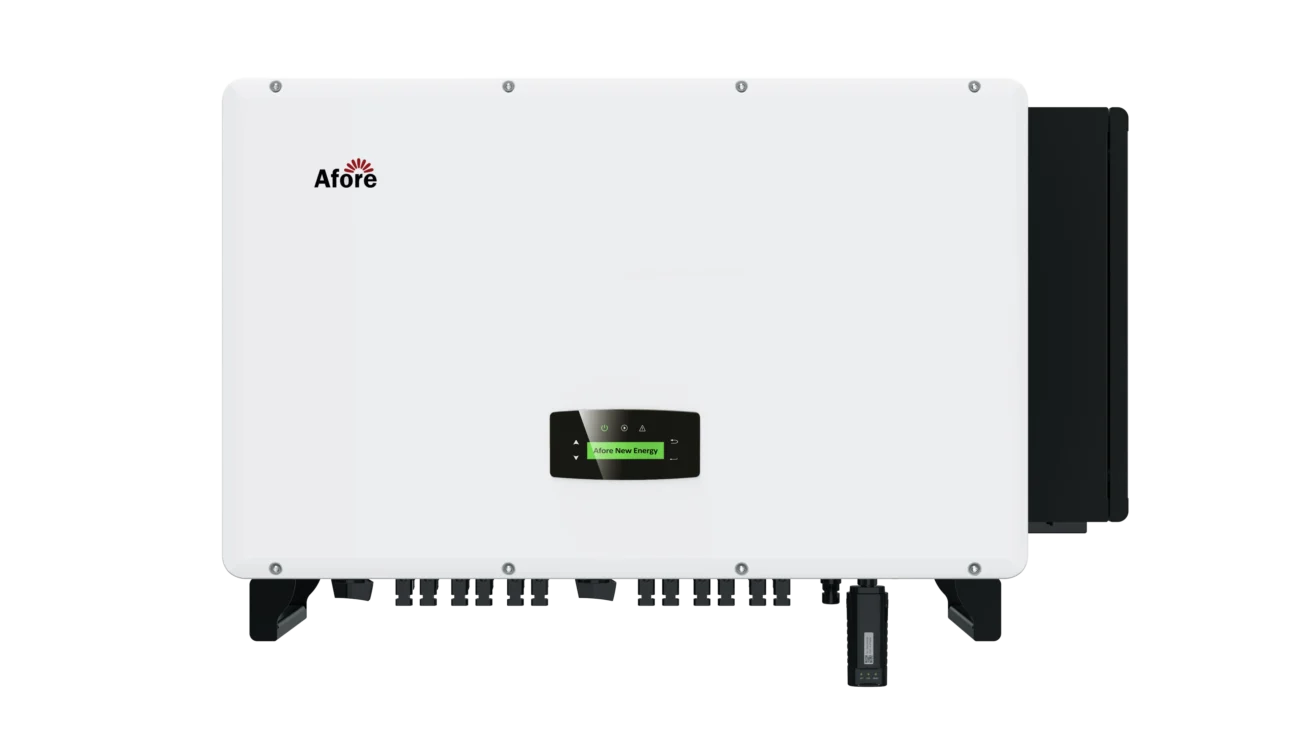
Втрата ефективності інвертора з часом
Чи стають інвертори з часом менш ефективними?
Серед власників сонячних систем поширеним питанням є те, чи стають інвертори менш ефективними з часом. Коротка відповідь - так, але це зниження зазвичай відбувається поступово і залежить від декількох факторів, включаючи якість інвертора, умови встановлення та практики технічного обслуговування.
Більшість сучасних сонячних інверторів спроектовані таким чином, щоб підтримувати високу ефективність протягом багатьох років, часто з гарантією від 10 до 15 років. Однак, як і всі електронні пристрої, компоненти всередині інвертора піддаються природному зносу, що може призвести до незначного зниження ефективності.
Втрата ефективності, як правило, невелика - часто менше 1% на рік - і не може суттєво вплинути на загальну продуктивність вашої системи в короткостроковій перспективі. Проте, протягом десятиліття або більше, ці кумулятивні втрати можуть зменшити кількість енергії, яку виробляє ваша сонячна система, впливаючи як на економію, так і на екологічні переваги.
Розуміння цієї поступової деградації ефективності допомагає встановити реалістичні очікування і підкреслює важливість регулярного технічного обслуговування і моніторингу для підтримки оптимальної роботи інвертора.
Причини зниження ефективності: Спека, пил, знос
Кілька факторів впливають на зниження ефективності інвертора в міру старіння пристрою, причому основними винуватцями є тепло, пил і загальний знос.
- Тепловий стрес: Під час роботи інвертори генерують тепло, а тривалий вплив високих температур прискорює старіння внутрішніх компонентів, таких як конденсатори та напівпровідники. З часом цей тепловий стрес руйнує ці компоненти, збільшуючи електричний опір і знижуючи ефективність перетворення. Ось чому належна вентиляція та встановлення в прохолодних, затінених місцях є критично важливими.
- Накопичення пилу та бруду: Накопичення пилу може забивати вентилятори охолодження та блокувати вентиляційні отвори, утримуючи тепло всередині корпусу інвертора. Це не тільки підвищує робочу температуру, але й загрожує перегрівом, що може призвести до раптового падіння ефективності або навіть виходу з ладу компонентів, якщо не вжити заходів.
- Знос і старіння компонентів: Електронні компоненти, зокрема електролітичні конденсатори, мають обмежений термін служби. З віком їхня здатність ефективно зберігати та передавати заряд зменшується. Крім того, паяні з'єднання та роз'єми можуть слабшати, що призводить до періодичних втрат продуктивності.
Ці фактори деградації накопичуються з роками, що призводить до зниження здатності інвертора ефективно перетворювати постійну енергію в змінну. Проактивні кроки для пом'якшення цих наслідків є важливими для довготривалої працездатності системи.
Як контролювати та підтримувати продуктивність інвертора
Підтримка оптимальної ефективності інвертора протягом усього терміну служби вашої системи починається з постійного моніторингу та своєчасного технічного обслуговування.
- Регулярний моніторинг продуктивності: Більшість сучасних інверторів оснащені програмним забезпеченням для моніторингу або сумісні з системами "розумного будинку", що дозволяє відстежувати вихідну потужність в режимі реального часу за допомогою додатків або веб-порталів. Порівнюючи очікувану та фактичну вихідну потужність, ви можете швидко виявити падіння ефективності або несправності.
- Візуальний огляд і чистка: Періодичні візуальні перевірки можуть виявити накопичення пилу, корозію або ознаки перегріву. Очищення вентиляційних отворів і вентиляторів від пилу допомагає підтримувати належний потік повітря, що має вирішальне значення для охолодження і запобігання втрат ефективності.
- Професійне обслуговування: Планові щорічні або раз на два роки перевірки кваліфікованим спеціалістом з сонячної енергетики гарантують, що внутрішні компоненти будуть перевірені, мікропрограма оновлена, а зношені деталі замінені до того, як вони вплинуть на продуктивність.
- Контроль навколишнього середовища: Встановлення інвертора в добре провітрюваному затіненому місці захищає його від надмірного нагрівання, безпосередньо підтримуючи стабільну ефективність.
Поєднуючи ці методи моніторингу та обслуговування, власники сонячних електростанцій можуть продовжити термін служби інвертора і підтримувати більш високі рівні ефективності, в кінцевому підсумку максимізуючи виробництво енергії та фінансові прибутки.
Як підвищити ефективність інвертора
Оптимальні умови встановлення
Один з найбільш простих, але ефективних способів підвищити ефективність вашого сонячного інвертора - забезпечити його встановлення в оптимальних умовах. Навколишнє середовище, що оточує ваш інвертор, відіграє ключову роль у його продуктивності та довговічності.
Перш за все, оберіть прохолодне, затінене місце з хорошим потоком повітря. Прямий вплив сонячних променів може призвести до перегріву інвертора, змушуючи внутрішні механізми охолодження працювати інтенсивніше і знижуючи ефективність. Встановлення сонячного інвертора в приміщенні, в добре провітрюваному приміщенні або під захисним навісом допоможе підтримувати стабільну температуру.
Крім того, не розміщуйте інвертор поблизу джерел тепла, таких як водонагрівачі або духовки, оскільки це може посилити тепловий стрес. Правильна висота та орієнтація монтажу також мають значення - наявність простору для циркуляції повітря навколо пристрою запобігає накопиченню тепла та підтримує стабільну продуктивність.
Створення ідеальних умов навколишнього середовища під час монтажу гарантує, що ваш інвертор працюватиме з максимальною ефективністю цілий рік, зменшуючи втрати енергії через перегрівання.
Регулярне технічне обслуговування та оновлення прошивки
Підтримка вашого сонячного інвертора в ідеальному стані вимагає постійної уваги після початкового налаштування. Регулярне технічне обслуговування має важливе значення для запобігання падінню ефективності, спричиненому пилом, сміттям або зносом компонентів.
Почніть з регулярного очищення - пил і бруд можуть забивати вентиляційні отвори та вентилятори, що призводить до перегріву. Обережно пилососьте або протирайте зовнішню поверхню інвертора та повітрозабірники кожні кілька місяців, особливо якщо ви живете в зоні з підвищеним вмістом пилу або пилку.
Окрім фізичного обслуговування, не забувайте про оновлення прошивки. Виробники часто випускають поліпшення програмного забезпечення, які оптимізують роботу інвертора, виправляють помилки або покращують сумісність з новими технологіями сонячних панелей. Перевірка наявності та застосування оновлень прошивки відповідно до рекомендацій виробника може підвищити ефективність інвертора та надійність системи.
Також розумно планувати періодичні професійні перевірки. Сертифіковані фахівці можуть виявити ранні ознаки зносу, замінити застарілі компоненти та відкалібрувати налаштування, щоб забезпечити безперебійну роботу вашого інвертора.
Правильний вибір розміру системи та узгодження компонентів
Правильний підбір сонячного інвертора відповідно до розміру та потужності масиву сонячних панелей має вирішальне значення для досягнення максимальної ефективності. Завеликий інвертор може працювати неефективно при низькому навантаженні, тоді як замалий інвертор може обмежувати потужність і знижувати продуктивність системи.
Щоб досягти правильного балансу, враховуйте очікувану максимальну потужність ваших сонячних панелей і типові вимоги до навантаження. Інвертори розміром від 80% до 110% потужності вашої сонячної панелі часто забезпечують найкращий компроміс між ефективністю та продуктивністю.
Важливим є не лише розмір, але й відповідність компонентів. Використовуйте сонячні панелі та акумулятори, які доповнюють характеристики напруги та струму вашого інвертора, щоб забезпечити безперебійний потік енергії. Таке ретельне узгодження запобігає виникненню вузьких місць, зменшує втрати енергії та підвищує загальну ефективність системи.
Якщо ви сумніваєтеся, проконсультуйтеся з кваліфікованим інсталятором, який може виконати детальне моделювання системи, щоб вибрати найкращий розмір інвертора та сумісні компоненти відповідно до ваших енергетичних цілей.
Ефективне використання MPPT (відстеження точок максимальної потужності)
Відстеження точки максимальної потужності (Maximum Power Point Tracking, MPPT) - це технологія, інтегрована в сучасні сонячні інвертори, яка динамічно регулює робочу точку ваших сонячних панелей для збору максимально можливої потужності в будь-який момент часу.
Алгоритми MPPT постійно контролюють напругу і струм, щоб знайти "золоту середину", де панелі досягають найвищої ефективності, компенсуючи зміни інтенсивності сонячного світла, температури і затінення.
Щоб повною мірою скористатися перевагами MPPT і підвищити ефективність інвертора, переконайтеся, що сонячні панелі встановлені і зорієнтовані належним чином, щоб MPPT міг ефективно працювати. Затінення навіть на невеликій ділянці вашого масиву може знизити здатність MPPT оптимізувати вихідну потужність, тому мінімізація затінення має вирішальне значення.
Деякі вдосконалені інвертори мають кілька каналів MPPT, що дозволяє незалежно оптимізувати окремі рядки панелей - особливо корисно для систем з різною орієнтацією панелей або проблемами часткового затінення.
Правильно використовуючи технологію MPPT, ви можете максимізувати видобуток енергії з сонячної батареї та підвищити загальну ефективність інвертора, що з часом призведе до кращої продуктивності та більшої економії.
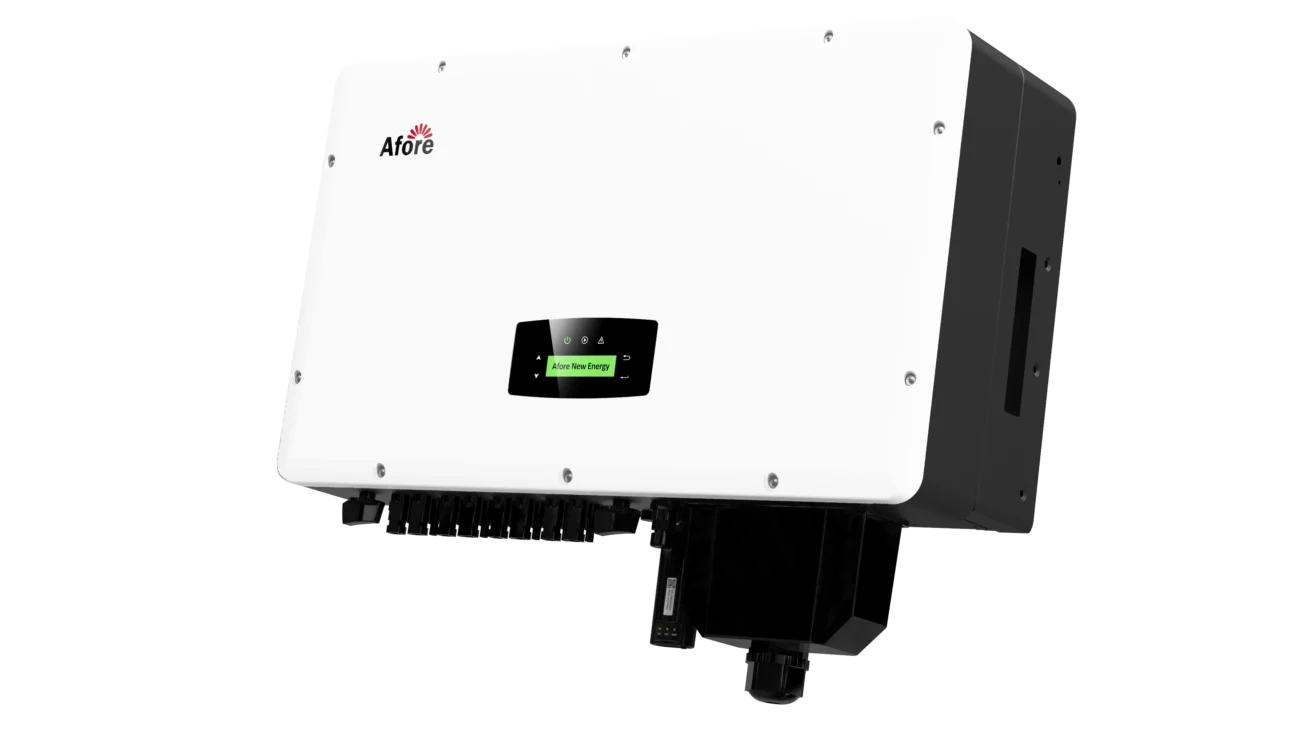
Екологічний та економічний вплив ефективних інверторів
Енергозбереження та рентабельність інвестицій
Вища ефективність інвертора означає більше корисної енергії, що зменшує вашу залежність від електромережі та знижує рахунки за електроенергію. За 25-річний період навіть підвищення ефективності 2% може означати тисячі заощаджень.
Зменшення вуглецевого сліду завдяки ефективним системам
Максимізація ефективності інвертора також означає зменшення відходів. Ви отримуєте максимальну віддачу від своїх сонячних панелей, що зменшує вплив на навколишнє середовище.
Довгострокові переваги для власників житла та бізнесу
Ефективний сонячний інвертор гарантує безперебійну роботу вашої системи, меншу потребу в ремонті та вищу рентабельність інвестицій.
Висновок
Коли справа доходить до максимізації потужності вашої сонячної електростанції, ефективність інвертора відіграє головну роль. Від вибору технології до встановлення та обслуговування - кожна деталь має значення.
Інвестиції у високоякісний сонячний інвертор з найвищою ефективністю інвертора окупаються у вигляді більшого виходу енергії, зменшення впливу на навколишнє середовище та кращої фінансової прибутковості. Зробіть розумний вибір сьогодні - адже кожен відсоток ефективності має значення.
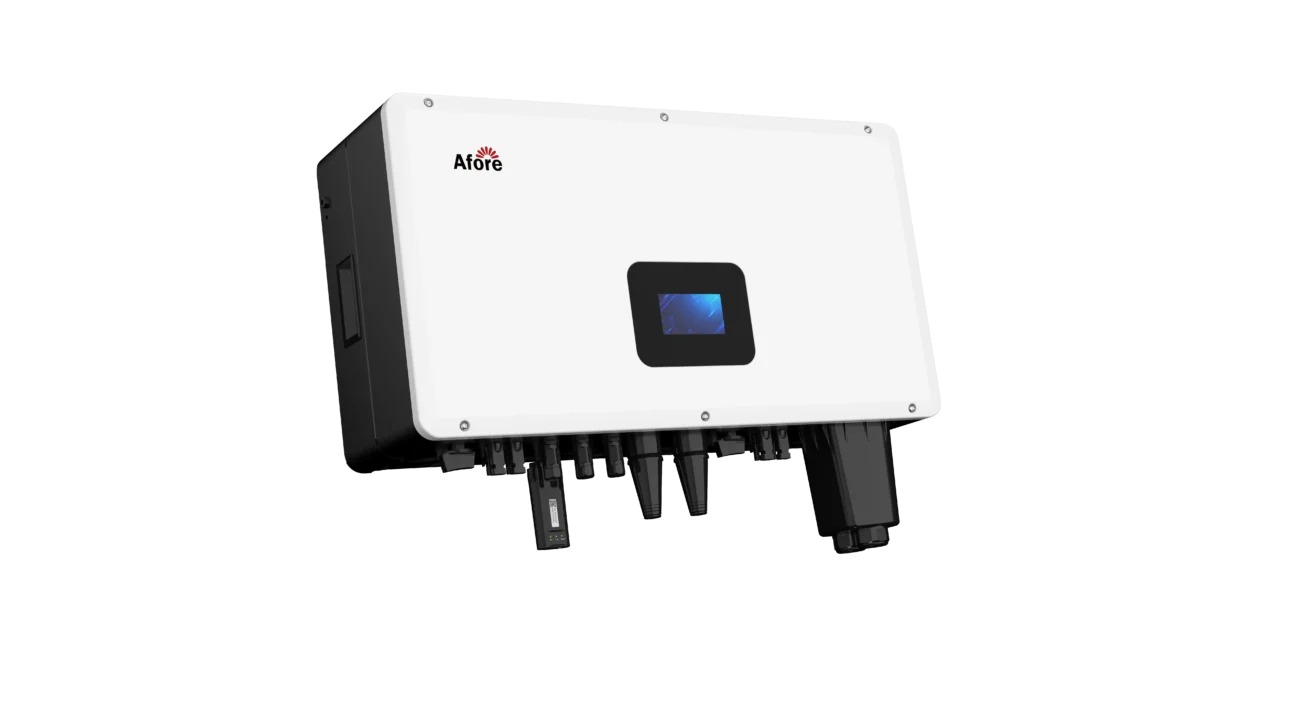
Поширені запитання про ефективність інвертора
-
Наскільки ефективний інвертор?
Коефіцієнт корисної дії сонячного інвертора зазвичай становить від 95% до 98%, тобто від 95 до 98% енергії постійного струму, що генерується сонячними панелями, перетворюється в корисну енергію змінного струму. Точний коефіцієнт корисної дії залежить від конструкції інвертора, умов навантаження та умов експлуатації.
-
Яка формула ефективності інвертора?
Коефіцієнт корисної дії інвертора розраховується шляхом ділення вихідної потужності змінного струму на вхідну потужність постійного струму, а потім множення на 100, щоб виразити його у відсотках:
Коефіцієнт корисної дії (%) = (вихідна потужність змінного струму ÷ вхідна потужність постійного струму) × 100.
Ця формула допомагає кількісно оцінити, наскільки добре ваш інвертор перетворює сонячну енергію. -
Яка втрата ефективності інвертора?
Втрата ефективності відбувається, коли частина сонячної енергії втрачається у вигляді тепла під час перетворення постійного струму в змінний. Типові втрати ефективності коливаються від 2% до 5% залежно від якості інвертора та умов експлуатації. З часом такі фактори, як тепловий стрес і накопичення пилу, можуть спричинити невеликі додаткові втрати.
-
Чи стають інвертори менш ефективними з часом?
Так, ефективність сонячних інверторів, як правило, поступово знижується протягом терміну експлуатації через старіння компонентів, тепловий вплив і знос. Однак при належному обслуговуванні більшість інверторів зберігають високу ефективність протягом 10-15 років.
-
Як підвищити ефективність інвертора?
Підвищення ефективності інвертора передбачає оптимальну установку - наприклад, розміщення інвертора в прохолодних, затінених місцях, регулярне очищення та оновлення прошивки, забезпечення правильного розміру системи та ефективне використання технології MPPT (відстеження точки максимальної потужності) для максимального перетворення потужності.
-
Що таке хороший ККД інвертора?
Хороший інвертор зазвичай має ККД не менше 95%. Сонячні інвертори преміум-класу можуть досягати ККД вище 97%, а найкращі моделі на ринку можуть похвалитися піковим ККД близько 98,5%.
-
Як температура навколишнього середовища впливає на ефективність інвертора?
Підвищення температури навколишнього середовища призводить до нагрівання інверторів, що знижує їхню ефективність перетворення через збільшення електричного опору всередині компонентів. Встановлення інвертора в затінених, добре провітрюваних місцях допомагає пом'якшити цей ефект.
-
Чи можна контролювати ефективність інвертора дистанційно?
Так, багато сучасних сонячних інверторів оснащені програмним забезпеченням для моніторингу або інтелектуальним підключенням, що дозволяє користувачам відстежувати продуктивність в режимі реального часу і виявляти падіння ефективності віддалено за допомогою додатків або веб-панелей управління.
-
Чи впливає розмір інвертора на ефективність?
Безумовно. Правильний вибір розміру інвертора відповідно до масиву сонячних панелей запобігає втратам енергії через відсікання потужності (якщо він недостатнього розміру) або неефективності при низькому навантаженні (якщо він надмірно великий). Інвертор розміром від 80% до 110% від потужності панелі зазвичай забезпечує найкращу ефективність.
-
Яку роль відіграє MPPT в ефективності інвертора?
Технологія MPPT динамічно регулює напругу і струм від сонячних панелей, щоб знайти оптимальну точку вихідної потужності. Це гарантує, що інвертор працює з максимальною ефективністю незалежно від зміни сонячного світла або температурних умов.




